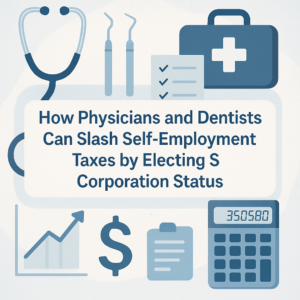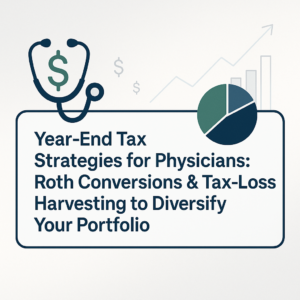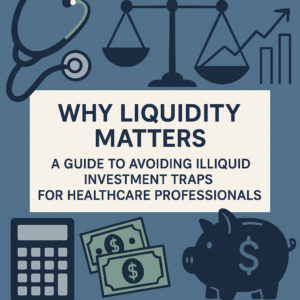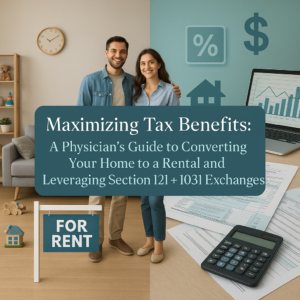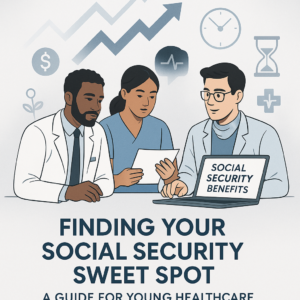Imagine a young doctor who has just finished their residency and started their first job. They are now earning a substantial income but are also dealing with student loan repayments, saving for a home, and considering the need for an emergency fund. Properly managing their finances is crucial for building a stable and prosperous future. One key aspect of financial planning is deciding where to park your savings to keep them safe while allowing them to grow. In this blog post, we will explore two popular savings options: High-Yield Savings Accounts (HYSAs) and Short-Term Treasury Bonds.
What are HYSAs?
High-Yield Savings Accounts (HYSAs) are financial products offered by banks and credit unions that provide higher interest rates compared to standard savings accounts. These accounts offer a safe place to store your money while earning a competitive annual percentage yield (APY), making them an attractive option for building your savings.
Competitive Interest Rates
One of the primary advantages of HYSAs is their competitive interest rates. Unlike traditional savings accounts, which often offer minimal interest, HYSAs provide significantly higher returns, allowing your savings to grow faster.
FDIC Insurance
HYSAs are typically insured by the Federal Deposit Insurance Corporation (FDIC) or the National Credit Union Administration (NCUA) for up to $250,000 per depositor, per institution. This insurance protects your money in the unlikely event that the bank or credit union fails, ensuring your savings remain safe.
Easy Access
HYSAs offer easy access to your funds without the penalties you might face with other investment options. You can transfer money between accounts or make withdrawals when needed, providing flexibility for managing your finances.
Opening a HYSA
Opening a HYSA is a straightforward process. Follow these steps:
1. Research and Compare Options: Look for banks or credit unions that offer attractive terms and conditions.
2. Gather Required Documents: Commonly required documents include your Social Security number, a valid ID, and proof of address.
3. Complete the Application: Fill out the application form online or at a branch. Be ready to provide information about your existing bank account for initial funding.
4. Fund Your Account: Transfer the minimum required deposit to open your HYSA.
5. Maximize Your Benefits: Regularly deposit funds to take advantage of the higher interest rates and set up automatic transfers if possible.
Drawbacks of HYSAs
Lower Yields Compared to Other Investments
While HYSAs offer higher interest rates than traditional savings accounts, they generally provide lower returns compared to more aggressive investment options like stocks or mutual funds. This can limit their appeal for those looking to maximize long-term gains.
Interest Rate Fluctuations
The interest rates on HYSAs can change over time, depending on market conditions and the policies of the financial institution. This means that the APY you earn today might not be the same in the future, potentially impacting your long-term savings plan.
Limited Transactions
Many HYSAs have limitations on the number of transactions you can make each month. Exceeding this limit might result in fees or the conversion of your account to a less favorable savings option.
Short-Term Treasury Bonds
Short-Term Treasury Bonds (often referred to as Treasury Bills or T-Bills) are government debt securities issued by the United States Department of the Treasury. These bonds typically have maturities ranging from a few days to one year, making them an attractive option for investors seeking low-risk, short-term investment opportunities.
Low-Risk Investment
One of the most significant advantages of Short-Term Treasury Bonds is their low risk. Being backed by the full faith and credit of the U.S. government, these bonds are considered one of the safest investment options available.
Steady and Predictable Returns
Short-Term Treasury Bonds offer steady and predictable returns, with a fixed interest rate determined at the time of purchase. This can make them an attractive option for risk-averse investors seeking a reliable source of income.
Higher Yields Compared to HYSAs
In many cases, Short-Term Treasury Bonds offer slightly higher yields compared to HYSAs, providing a better return on investment while still maintaining a low level of risk.
Drawbacks of Short-Term Treasury Bonds
Less Liquidity
Unlike HYSAs, Short-Term Treasury Bonds are less liquid, meaning you cannot access your money as quickly. While it is possible to sell these bonds before they mature, doing so might incur a loss if the market conditions are unfavorable.
Fixed Terms
Short-Term Treasury Bonds come with fixed terms, meaning you must hold them until maturity to receive the full benefit of their returns. This lack of flexibility can be a disadvantage if you need quick access to your funds.
Step-by-Step Guide to Purchasing Short-Term Treasury Bonds
1. Open a TreasuryDirect Account: Visit the TreasuryDirect website and open an account. You’ll need your Social Security number, a valid ID, and bank account information for setup.
2. Fund Your Account: Link your bank account to fund your TreasuryDirect account.
3. Browse Available Bonds: Review the current offerings on TreasuryDirect. Note the terms and interest rates.
4. Purchase Bonds: Select the desired bonds and complete the purchase. You can choose to reinvest the proceeds automatically upon maturity.
Comparing the Two
Accessibility
HYSAs offer unparalleled accessibility, allowing you to withdraw or transfer funds as needed without penalties. This makes them ideal for managing everyday expenses or emergency savings. In contrast, Short-Term Treasury Bonds require you to hold the investment until maturity or sell it on the secondary market, which might not always be favorable.
Yield
When it comes to yield, Short-Term Treasury Bonds often have a slight edge over HYSAs. The fixed interest rate on Treasury Bonds can provide a predictable and potentially higher return, especially during periods of economic stability. However, HYSAs can offer competitive APYs that might vary but remain advantageous for those seeking flexibility alongside reasonable returns.
Investment Horizon
For short-term saving goals, both HYSAs and Short-Term Treasury Bonds can be effective. HYSAs are better suited for those who need quick access to funds for emergencies or planned expenses. Short-Term Treasury Bonds, on the other hand, are ideal for those who can commit funds for a set period to earn a slightly higher return without taking on significant risk.
Further Practical Applications for Healthcare Professionals
Emergency Fund
Building an emergency fund is crucial for healthcare professionals who need a financial safety net. HYSAs are typically the best option for emergency savings due to their high liquidity and ease of access. You can withdraw funds quickly in case of unexpected expenses, such as medical emergencies or urgent home repairs.
Short-term Savings Goals
For short-term savings goals like a down payment on a house, advanced medical equipment, continuing education, or further education, both HYSAs and Short-Term Treasury Bonds can be suitable. HYSAs provide flexibility and easy access to funds, while Short-Term Treasury Bonds can offer slightly higher returns if you can afford to wait until the bond matures.
Healthcare professionals often navigate hectic and unpredictable schedules, making efficient financial planning all the more critical. Both High-Yield Savings Accounts (HYSAs) and Short-Term Treasury Bonds offer unique advantages that can align with your specific financial needs and goals.
We encourage you to evaluate your financial situation and consider which investment strategy might best suit your individual needs and goals. At Mainstay Capital, we are here to help. Contact us today to tailor a savings plan that fits your extraordinary career. Schedule a consultation with our Certified Financial Planner to discuss how you can optimize your savings and make your money work as efficiently for you as you do for your patients.
Disclaimer: This blog is for informational purposes only and does not constitute financial advice. Please consult with a qualified financial advisor for advice specific to your financial situation. Investment outcomes can vary and are subject to market risks.


